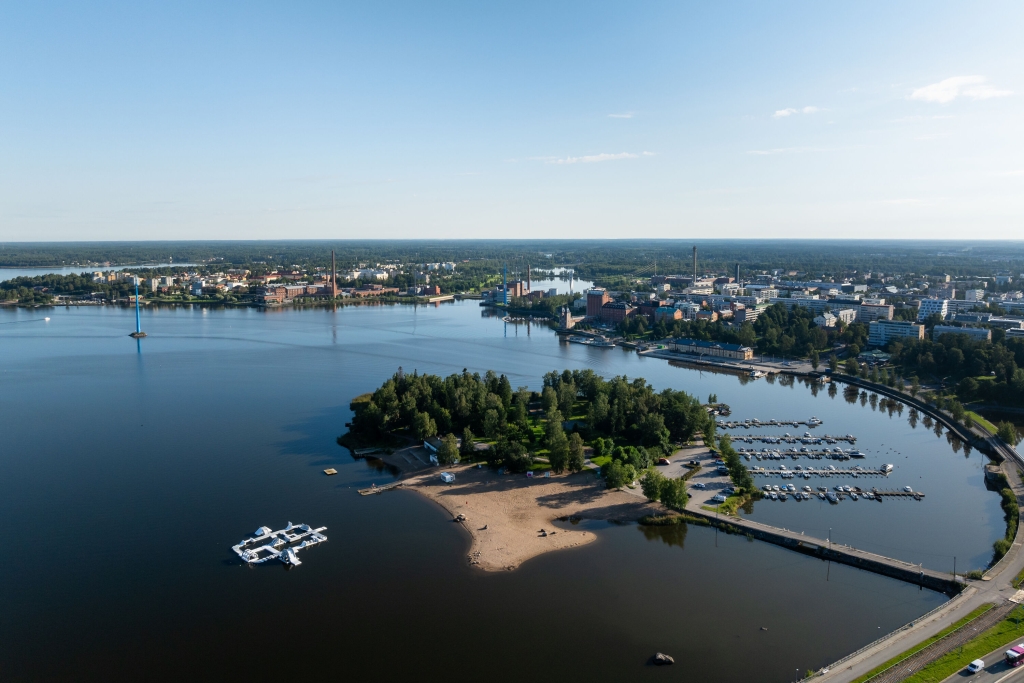
Article categories: News
Water quality improved at two beaches – stormwater may be a source of bacteria
Published: 14.11.2025
The City of Vaasa’s efforts to improve the bathing water quality at local beaches are reflected in the latest test results. According to the annual report by the health protection authorities, next year's water quality ratings for Hietasaari and Kustaanlinna beaches are set to improve. The water quality rating for Ahvensaari, however, will remain poor. Monitoring of water quality and related measures will continue in the summer of 2026.
The water quality rating at Hietasaari beach will move from poor to satisfactory, while Kustaanlinna beach will improve from satisfactory to good. The rating for Mansikkasaari will remain good, while Strömsö will continue to be excellent. Ahvensaari’s water quality rating will remain poor for the third year in a row. If the bathing water is rated poor for five consecutive years, the authorities are required to impose a permanent swimming ban for at least one bathing season.
The water quality ratings for bathing beaches are based on the levels of intestinal bacteria, which the city measures at the beaches every year from June to August. Next summer’s water quality ratings are based on the results from the four most recent bathing seasons (2022–2025).
– The improved results at Hietasaari and Kustaanlinna show that the action we have taken is working. The City of Vaasa has taken measures such as cleaning the beaches and using dogs to deter geese. Last summer, the Goose Patrol operated with five dogs, and the cleanliness of the beaches improved noticeably compared with previous years, says Maarit Kantola, Health Engineer.
The source of the bacteria was investigated this year
In the summer of 2025, the causes of poor bathing water quality were studied through extensive bacterial monitoring of stormwater, a ditch, a canal, and the Tuovilanjoki River. Samples were taken from all seven monitoring sites four times on rainy days, when the largest amounts of stormwater flow into the sea.
– The levels of bacteria measured in the stormwater were many times higher than those in the ditch and Tuovilanjoki River samples, especially following the 19-day dry spell in July. Some of the bacteria at the beaches may have resulted from contamination carried by rainwater. Many of Vaasa’s stormwater drains discharge directly into the sea, Kantola says.
Intestinal bacteria can enter stormwater and waterways from a variety of sources, including animal faeces, leaks from sewage pipes, and faulty connections. Other significant sources of impurities include soil erosion, litter and waste, as well as fertilisers used in green spaces. During dry spells, microbes accumulate on streets and in yards, from where they are washed into waterways by rain.
Practical measures will continue next summer
Work to improve the quality of bathing water continues on many fronts. Next year, the levels of bacteria in the bathing water at Ahvensaari and Kustaanlinna will be monitored even more frequently to gain more detailed information on the effects of rainwater runoff and stormwater.
In Hietalahti, planning is underway for a detention basin near the baseball field to manage stormwater. The basin is designed to help manage rainwater and improve stormwater quality before it enters the waterways.
Efforts to deter geese using dogs will continue at the beaches at Ahvensaari, Hietasaari, Mansikkasaari, and Kustaanlinna, as well as in the Onkilahti activity park. The deterrence measures aim to reduce goose droppings on the beaches, thereby improving the hygiene of the beaches and the water.
The official bacterial action limits for bathing water are 500 MPN/100 ml for E. coli and 200 CFU/100 ml for intestinal enterococci. Stormwater and other waters studied in the summer have no action limits, as they are not intended for swimming. Although the summer sampling sites were located further from the bathing beaches, for comparison it can be noted that bacteria levels in the ditch, canal, and river approached the bathing water limits, particularly for intestinal enterococci. However, bacteria levels in stormwater were typically 5–10 times higher, and after the dry spell, up to 200 times higher than the action limits for bathing water.
